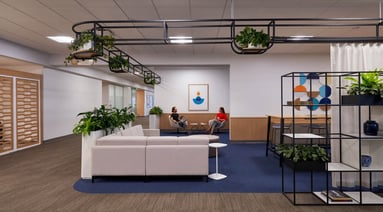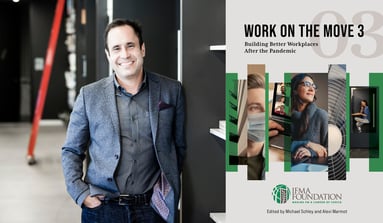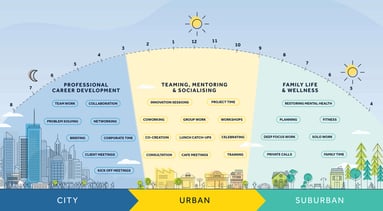13 experiential interior design tips for 2024
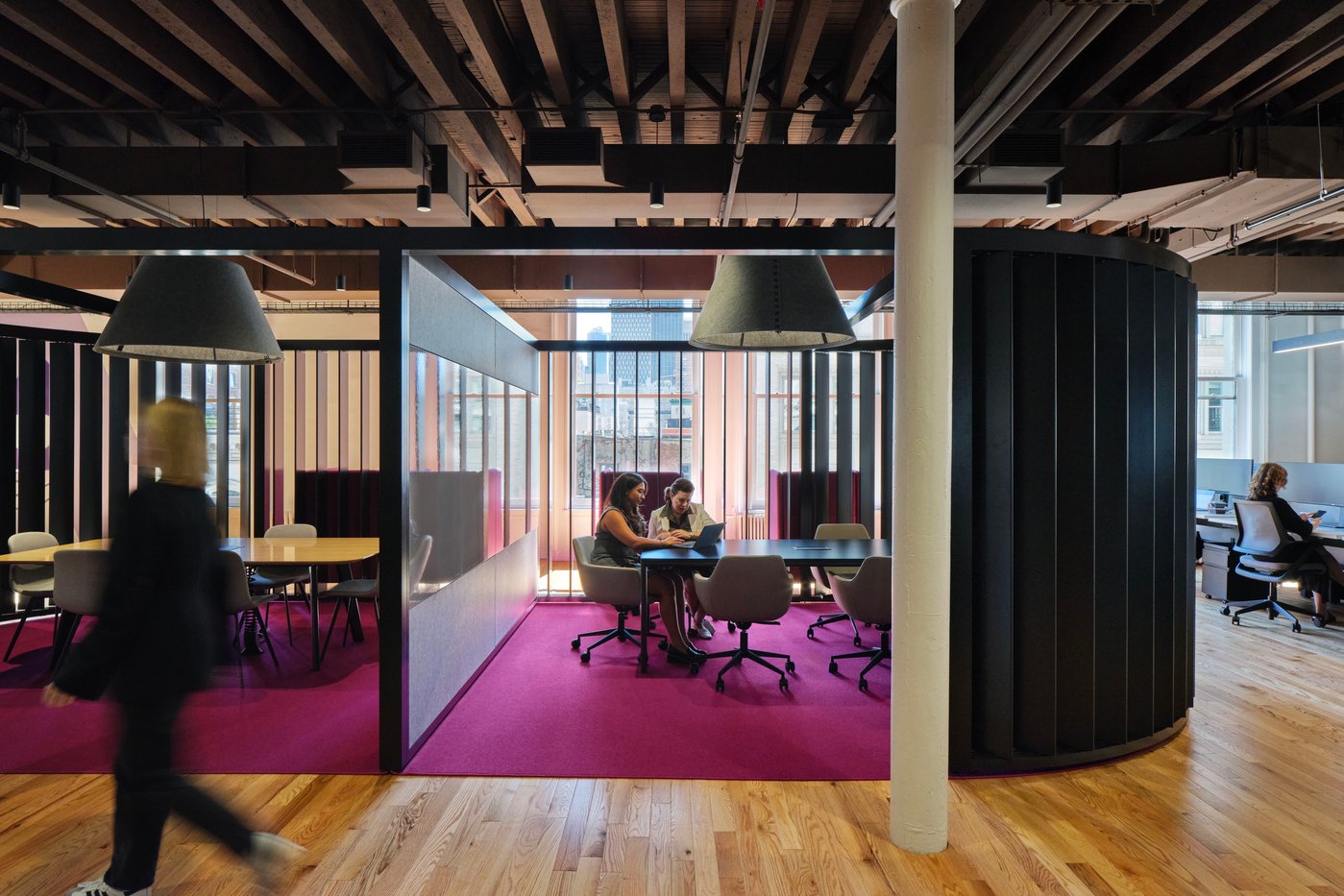
A conversation with our experts on the key insights that will impact your workplace strategy this year.
In 2024, the ever-changing landscape of workplace strategy and commercial interior design continues to adapt to the evolving needs of employees and organizations. We reached out to our team of global workplace strategists and designers, seeking their insights and predictions for the year ahead. Here's a glimpse of what they shared regarding the future of workplace design and the significance of enhancing the overall employee experience.
Don’t have time to read the full article? Access the full outlook here.
1. How will workplaces continue to adapt to the global return to office? Will they be “magnets,” or will mandates win out?
“Having tried incentives and mandates to get employees back to the office more often, with these often failing to drive lasting change, many businesses are now in a pivotal moment of acceptance that the hybrid 2-3 day per week model is the way forward. This sense of closure means leaders are now channeling energy into proactively navigating the new reality instead of resisting change. So, the question becomes, how can businesses close this chapter, embrace the advantages of the hybrid model, and provide a great experience for their employees moving forward?”
– Emma Davenport, Senior Principal, Strategy, Australia
Pro tip: Create inclusive, collaborative spaces that seamlessly merge in-person and remote work.

2. With hybrid work here to stay, how can companies best optimize their spaces to support their employees to do their best work?
“Many organizations rely on reservation systems to manage occupancy, but without sound policies, the technology can make the issues even worse because employees can’t reserve spaces they want, the technology is not adopted universally, and employees become disillusioned.”
– Albert DePlazaola, Senior Principal, Strategy, Americas
Pro tip: Employees don’t experience averages; they experience peaks. Corporate interior design must account for that while considering the impact of policies and technology.
3. How can companies design workplaces that are adaptable and resilient to unforeseen challenges and disruptions?
“We are observing more companies moving away from traditional/neighborhood arrangements in favor of dynamic free-flow zones, such as collaboration zones for discussions and library zones for focused work. This enhances adaptability and fosters a more personalized workplace experience.”
– Jianhan Qiu, Principal, Strategy, Asia
Pro tip: Incorporate quiet “library zones” and open “collaboration zones” to enable employees to choose where they work best.
4. Are there any trends or design innovations from other industries that you believe could have a transformative impact on workplace design in the near future?
“We seek spaces that enhance our experience through a connected nervous system servicing our whims. We envision buildings that resemble iPhones, with a great user interface, personalized features, adaptability, convenience, searchability, and on-demand content. These transformative spaces are generative, cognitive, and facilitate learning for both the employees and the surrounding community.”
– Simon Pole, Principal, Experience Design, Downstream
Pro tip: Think like a consumer products company to deliver spaces employees want to “consume.”
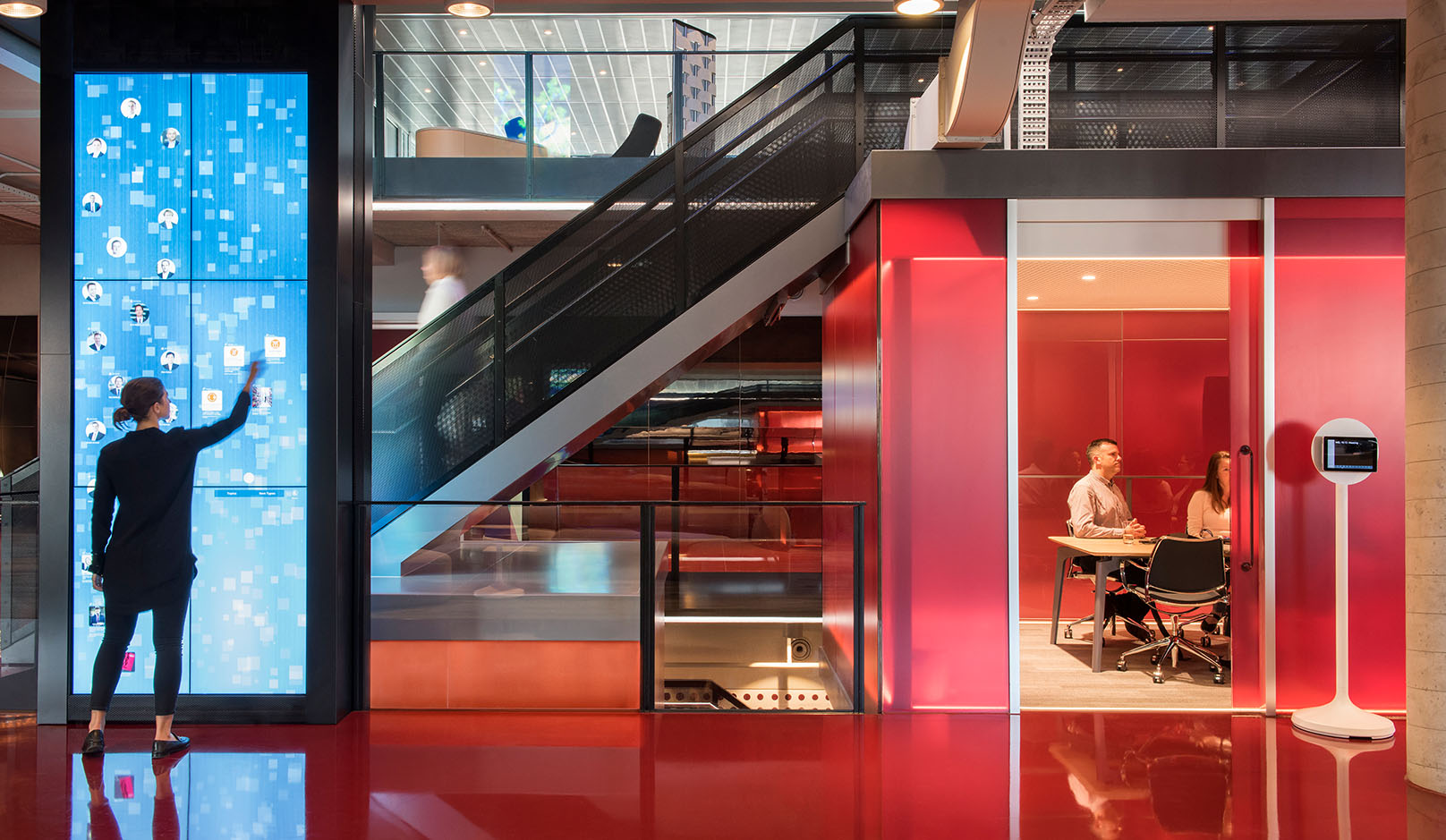
5. What lessons have we learned from the pre-2020 office, the work-from-home experience, and the hybrid model, and how can these lessons contribute to shaping a new paradigm in workplace design?
“The work-from-home experience showed us the value of quiet spaces where employees can do heads-down work. Many offices aren’t set up to support focus tasks, so we’ll see more employers add phone booths, focus rooms with closeable doors, and quiet neighborhoods and libraries. We can also expect significant upgrades to meeting and desk technology to support hybrid working and create better experiences than what employees get at home. To foster wellness and inclusion in the office, we’ll see more biophilia and natural light and increased access to gender-neutral facilities.”
– Aimee Collins, Senior Principal, Design, Americas
Pro tip: The workplace is not competing with the home office; it’s competing with the benefits of working from home…that’s why it needs to be a better experience.
6. What are the most innovative/interesting new materials we’ll see in design in 2024 and beyond?
“Australia will become the first country in the world to place a national ban on engineered stone as of July 1, 2024, due to a surge in silicosis cases. This will trigger the industry to really invest in silica-free products to fill the gap in the market. I believe we will also see an increase in manufacturer research and development into new materials made from waste byproducts. This will minimize our reliance on raw materials along with a focus on biomaterials to work towards lowering the embodied carbon footprint of buildings and products.”
– Karen Garrett, Associate, Design, ESD Lead, Australia
Pro tip: Replace common non-renewables with regenerative materials such as timber, hemp, algae, and mycelium derived from living organisms to help capture carbon.
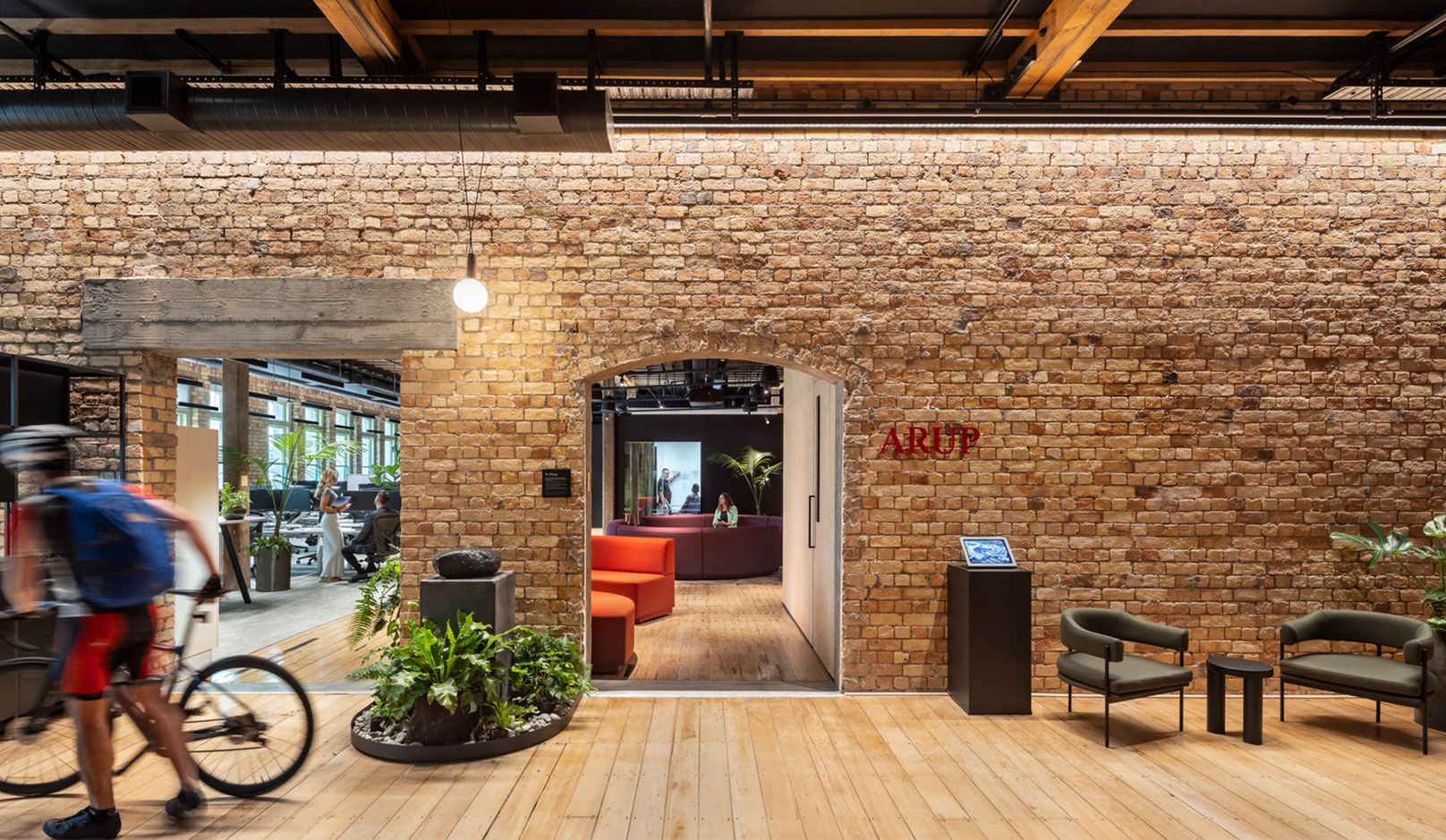
7. What are the top things that workplace technology needs to be able to do in 2024 to support the way we work today?
“Personalization through technology is set to revolutionize workplace experience. Taking cues from our favorite streaming services, smart buildings can become like Netflix or Spotify for the workplace. The software exists already—for example, Microsoft captures our virtual interactions through emails, Teams conversations, and Outlook appointments. With this valuable data, employees could receive personalized suggestions for workspaces that suit their preferences, needs, and work requirements. Just like how Netflix suggests shows that satisfy our guilty pleasures.”
– Leonie M. Hicks, Senior Associate, Strategy, Australia
Pro tip: Use data and machine learning to predict behaviors and enable a responsive design that truly understands and meets individual needs.
8. As the emphasis on creating neurodiverse and equitable workplaces grows, how will design for inclusion evolve this year, and how does this translate into real-world solutions?
“In today’s workplaces, prioritizing the mental health and wellbeing of all employees, including those with neurological differences, is crucial. Designing for neurodiversity can have a significant positive impact on both individuals and organizations as a whole. Integrating wellness spaces separate from work settings, equipped with enhanced acoustic and privacy measures, allows employees to recharge and manage stress. Clearly delineating zones for high and low activity caters to individual and collaborative working needs, while simple signage and appropriate communication tools accommodate different processing preferences.”
– Ian Worthy, Senior Principal, Design, Australia
Pro tip: Embrace other design elements, such as carefully considering texture, lighting levels, and the psychology of applied color, to create a truly inclusive environment.
9. How will we see businesses continue to use their workplaces as a tool to support physical, mental, and emotional wellbeing?
“It is important for businesses to consider transitional moments. Historically, workplace design has focused on the more structural aspects of an employee’s day, like meetings, focused work, learning, and social breaks. Transitional moments are characterized by the negative space between these structured activities. For example, riding in an elevator, switching from travel to work mode, or from an intense meeting to concentration work. Supporting these transitional moments can greatly impact employee productivity, connection, and wellbeing.”
– Emma Davenport, Senior Principal, Strategy, Australia
Pro tip: Consider how the workplace design and the full spectrum of sensory experiences in the office can support an employee in switching modes.
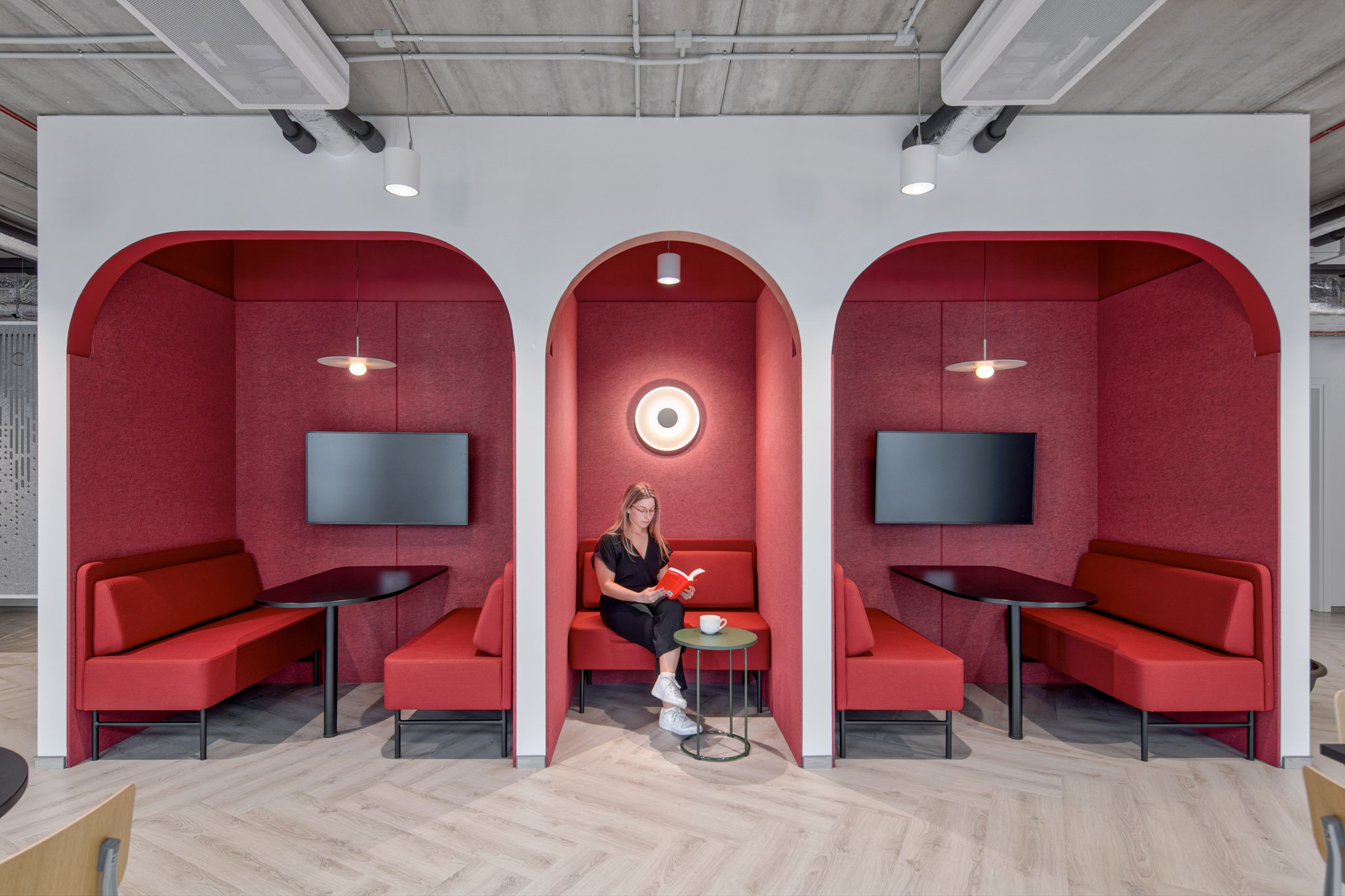
10. What meaningful initiatives can businesses take to enable sustainability best practices in the workplace?
“Businesses are constantly evolving, and spaces are therefore reconfigured to suit, which can notoriously be a very wasteful process; however, it can be mitigated by adopting principles to increase the functional life of regularly replaced products and materials. This can be achieved by reusing and repurposing components, designing modular workplaces to be flexible, and considering ‘Product as a Service’ as an alternate procurement method which allows for the changing needs of business requirements more sustainably.”
– Karen Garrett, Associate, Design, ESD Lead, Australia
Pro tip: Embrace a circular mindset to minimize waste and conserve water and energy.
11. How can workplaces reinforce employees’ connection to the values
and purpose of the organization?
“When employees feel a strong alignment between their personal values and the values of their workplace, they are more engaged, motivated, and committed to their jobs. Organizations can support this by clearly communicating their values and purpose through meaningful and integrated messages, interfaces, and experiences within the workplace. They can encourage employees to integrate the organization’s values into their daily tasks and decision-making processes.”
– Tim Larson, Managing Director and Chief Creative Officer, Asia
“The workplace remains a strategic asset and catalyst for culture, community, and engagement to maximize the social capital. We have seen organizations acknowledging that we are now designing with the future workforce in mind (by 2030, 80% of the workforce will comprise of Gen Zs and Millennials). The 18–34-year-olds are happy to spend most of their working week in the office. So, when they come to the workplace, they expect that their needs are catered for. This generation, in particular, expects that their personal values align with those of the organizations’ and they want to see diversity, inclusion, and belonging in practice. People at work are motivated by social relationships and the need to belong as the most critical ingredient of long-term wellbeing.”
– Lena Mueller, Principal, Strategy & Innovation, New Zealand
Pro tip: Create meaningful, rewarding, authentic workplace experiences and behaviors that connect employees to your values and purpose.
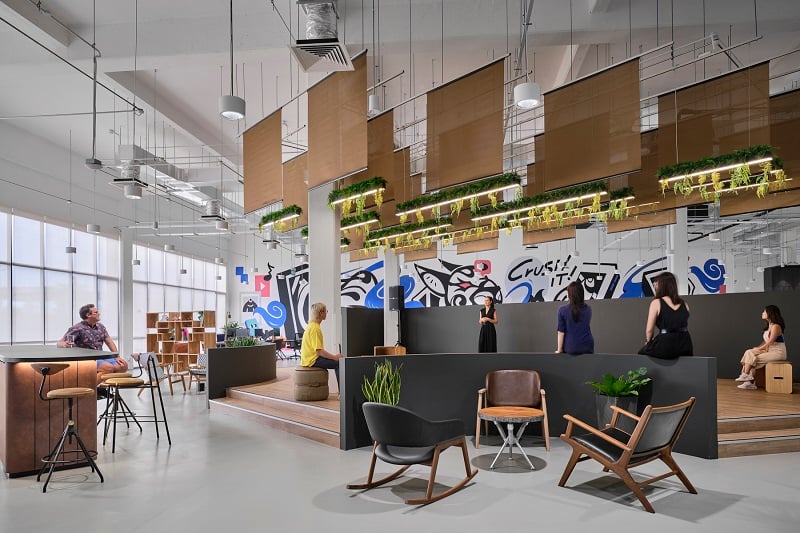
12. How will workplace design contribute to the competitive edge in talent attraction and retention this year?
“As companies seek to create environments that attract and retain talented employees, it’s essential to understand that buildings are more than just structures and visual aesthetics. They have character and personality that can deeply affect how individuals interact with them.”
– Simon Pole, Principal, Experience Design, Downstream
Pro tip: Foster meaningful connections between people and the workplace to build thriving communities of people who are inspired and energized to work productively and effectively.
13. How can companies create workplace experiences for multiple generations?
“By taking a holistic approach, companies can create workplace experiences that resonate with employees across multiple generations, fostering a sense of belonging and a culture of mutual respect. By recognizing and valuing the differences among employees from various generations, companies can create a more inclusive and harmonious workplace that benefits everyone. The key is to be adaptable, responsive, and committed to continuous improvement, based on the evolving dynamics of the workforce.”
– Julie Lecoq, Associate, Strategy, EMEA
Pro tip: Create a sense of belonging and a culture of mutual respect.
Interested in learning more? Download all of the insights to uncover what our workplace strategists and designers have to say on these questions and more.
